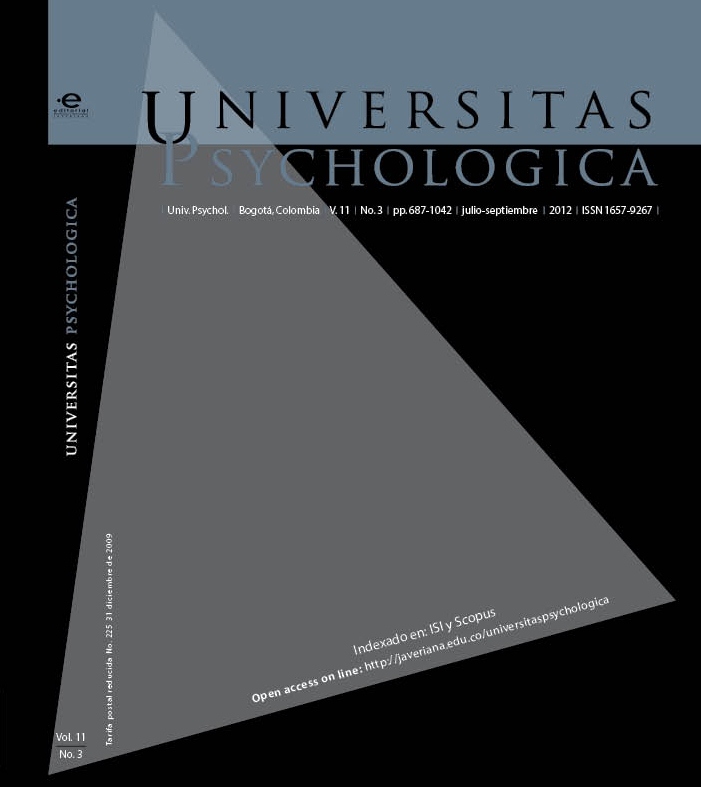Abstract
This paper offers explanations of the meanings that push children to illegally armed groups in Colombia from the testimony of 21 demobilized young girls from the region of Antioquia (Colombia). The girls’ answers are placed on a typology of explanations drawn from academic reports, and compared to three samples of attributions of students, teachers and policemen of their same region. The visions “idealizing” and “criminalizing” mobilization are practically marginal in all samples. The dominant vision among the girls is called “self-assertive”. From the rest of the samples, as well as for the experts, the majority of the views are “victimizing”.
This journal is registered under a Creative Commons Attribution 4.0 International Public License. Thus, this work may be reproduced, distributed, and publicly shared in digital format, as long as the names of the authors and Pontificia Universidad Javeriana are acknowledged. Others are allowed to quote, adapt, transform, auto-archive, republish, and create based on this material, for any purpose (even commercial ones), provided the authorship is duly acknowledged, a link to the original work is provided, and it is specified if changes have been made. Pontificia Universidad Javeriana does not hold the rights of published works and the authors are solely responsible for the contents of their works; they keep the moral, intellectual, privacy, and publicity rights. Approving the intervention of the work (review, copy-editing, translation, layout) and the following outreach, are granted through an use license and not through an assignment of rights. This means the journal and Pontificia Universidad Javeriana cannot be held responsible for any ethical malpractice by the authors. As a consequence of the protection granted by the use license, the journal is not required to publish recantations or modify information already published, unless the errata stems from the editorial management process. Publishing contents in this journal does not generate royalties for contributors.


